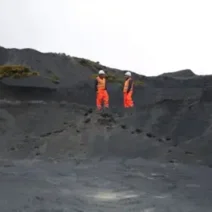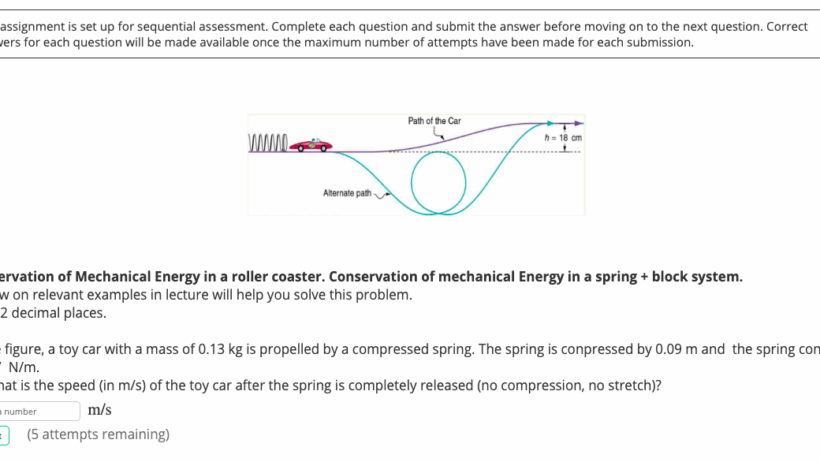Ice skating is an elegant sport that showcases not only athleticism but also the principles of physics. At its core, the performance of an ice skater embodies the concepts of mechanical energy conservation. This phenomenon is pivotal in understanding how skaters execute their movements with grace and precision. When examining whether an ice skater utilizes the conservation of mechanical energy, one must delve into the definitions and transformations of kinetic and potential energy.
To begin, mechanical energy is the sum of potential energy (PE) and kinetic energy (KE). In the context of an ice skater, kinetic energy is the energy of motion, defined by the expression KE = 1/2 mv², where “m” stands for mass and “v” for velocity. Conversely, potential energy, particularly gravitational potential energy, is dependent on an object’s height above a reference point, denoted by PE = mgh, where “g” represents the acceleration due to gravity and “h” is the height.
When an ice skater begins their routine, they may start from a stationary position, acting as a reservoir of potential energy. As they push off the ice and initiate movement, this stored potential energy is transformed into kinetic energy. The skater accelerates, demonstrating the conversion from one form of mechanical energy to another. The key concept here is the principle of energy conservation, which posits that the total mechanical energy in an isolated system remains constant, provided no external forces perform work on it.
As the skater glides across the ice, they harness the conservation of mechanical energy. The frictional forces between the skate blade and the ice, although minimal, do play a role in energy loss. However, it is crucial to recognize that in an idealized scenario—where the effects of air resistance and friction are negligible—the principle holds firm. The skillful maneuvers of a skater, such as twirls, jumps, and spins, can also be analyzed through this lens.
Take, for instance, the mechanics of a jump. As a skater ascends into the air, they convert kinetic energy into potential energy. At the peak of their jump, the kinetic energy approaches zero, while potential energy reaches its zenith due to the height gained. However, as the skater descends, the potential energy is converted back into kinetic energy until they land smoothly on the ice. Through this cyclical transformation, the conservation of mechanical energy is vividly illustrated.
Skaters additionally utilize rotational motion, a fascinating aspect that introduces angular momentum into the discussion. When a skater spins, they optimize their energy conservation by pulling their arms closer to their body, which decreases their moment of inertia. This action causes their angular velocity to increase, showcasing an exquisite display of both mechanical energy conservation and rotational dynamics.
Furthermore, the intricate choreography of an ice skating routine requires meticulous energy management. Skaters must master the energy transitions between different elements of their performance. For instance, transitioning from a powerful edge to a controlled spin involves strategic energy redistribution. This careful balance not only enhances their performance but also conserves energy, allowing for sustained execution of complex maneuvers.
In addition to the physics of movement, environmental consciousness plays a role in competitive ice skating. The preparation and maintenance of ice rinks can consume significant energy resources. Efficient practices in constructing and operating rinks can mitigate energy expenditure, aligning the sport with broader conservation principles. Through this synergy of athleticism and sustainability, the essence of ice skating is interwoven with the conservation of energy.
The discussion of mechanical energy conservation in ice skating transcends mere theoretical concepts. Coaches, athletes, and enthusiasts can benefit from understanding this interplay between physics and performance. For aspiring skaters, the awareness of how energy transformations impact their movements can lead to enhanced technique and execution. By applying these principles in practice, skaters can achieve greater efficiency, thereby reducing the likelihood of fatigue and injury.
Moreover, this knowledge can be invaluable in competitive settings. Skaters who understand the nuances of energy conservation may have a competitive edge, as they can optimize their routines for maximum performance. The acknowledgment of energy dynamics fosters an appreciation of the sport’s complexity and encourages a deeper engagement with the art of ice skating.
In conclusion, an ice skater certainly employs the conservation of mechanical energy throughout their performance. From the initial push-off to the dynamic transformations during jumps and spins, the principles of kinetic and potential energy govern their movements. The intersection of physics and artistry in ice skating exemplifies the beauty of this natural law. By incorporating sustainable practices within the sport, ice skating harmonizes athleticism with environmental stewardship, showcasing the comprehensive importance of energy conservation in both practice and philosophy.








